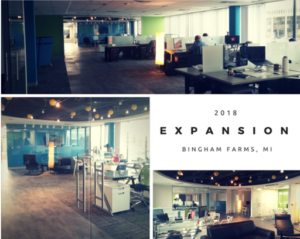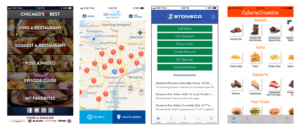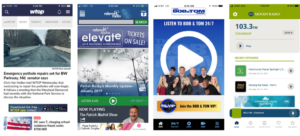Today’s medical practices face competition and increased expectations from an informed and tech-savvy client pool. One of the best ways to meet those expectations as well as to drive more customer engagement is to focus on the patient journey.
What is the patient journey? And how can you use a simple app to improve it for everyone? Here are a few answers.
The Patient Journey
The key to designing an app that improves patient experience is to understand the journey that patient’s take through their medical care. This journey begins long before the customer calls for an appointment, continues as they have various interactions with you and your staff, and ends after they are back home. It generally has six key steps: awareness, help, care, treatment, changes in lifestyle, and ongoing care.
Ideally, this journey shouldn’t be a one-time event. Instead, the more your patients interact with staff and feel empowered throughout the steps, the more likely it is that the journey will circle around repeatedly.
The Steps of the Journey
A customer-facing app is a great way to manage the engagement journey at all the principle steps. How can this work? Here are a few ways it boosts each touchstone.
Awareness
Patients today seek information about their health in a variety of ways — some qualified and many unreliable. Can you use an app to help engage them in reputable sources for research about various health issues? Simple information about common health concerns or symptoms, for instance, keep the client informed but also keep them within your sphere of influence.
Help
This stage of the journey is when your practice first interacts with the patient in person, usually with a phone call and appointment request. An app means your patient can make an appointment whenever they want. They can choose from available times or providers without delay. If they need personal assistance, schedulers can offer to chat or even send a text.
Care
The care stage occurs when a person comes in for a visit with their provider. Use an app to help people complete forms though a customer portal, see wait times or delays, and even choose virtual visits for busy patients with common health challenges.
Treatment
Care, of course, extends beyond the office visit. You may prescribe medicine, therapy, or follow up visits. Patient portals allow providers and patients to all be informed as to the treatment plan. You may use an app to give push notifications that remind clients of home treatment needs, provide information before or after a procedure, and make follow-up inquiries.
Lifestyle Changes
The fifth step in the journey is all about preventing recurrences and further need for in-office care. Follow-up questions are an easy way to help people make positive changes, and an app is a simple way to offer assistance. You can also share documents, recommendations, and helpful information with the patient through the portal right on their phone.
Ongoing Care
Once a patient’s single engagement journey comes to an end, be proactive about continuing the relationship. Once a patient has downloaded your app, make it a primary source of medical information and assistance. Provide changing and informative content about common health issues in your area and during various seasons. Offer notifications about things like annual exams, vaccinations, or refills.
Designing an app that focuses on ways to interact and engage with clients throughout their medical care journey can be difficult. You need an experienced app developer on your team as early in the process as possible. At jacapps, we provide mobile solutions focused on the needs of the healthcare industry. Call today to make an appointment.













